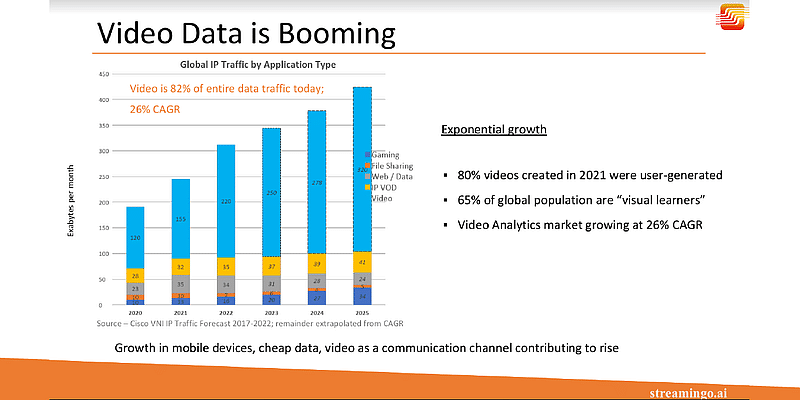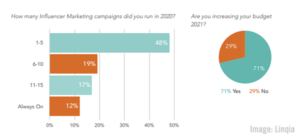We are in the era of unstructured data or dark data. An estimated 90 percent of digital data is unstructured data. Unstructured data sources are commonly found in web pages, images (JPEG, GIF, PNG, etc.), videos, memos, reports, Word documents, and PowerPoint presentations. This kind of data neither conforms to a data model nor has any structure. It cannot be stored in the form of rows and columns as in Databases, and it does not follow any semantics or rules. It lacks any format or sequence, and due to lack of identifiable structure, it cannot be used by computer programs easily.
Enterprises around the world are coming to grips with analysing unstructured data in documents, presentations, speech, and images today. The problem of unstructured data analysis just got more complicated.
Digging through the problem
Video data traffic on the internet is 82 percent of all internet traffic. 80 percent of all video content is user generated, and 65 percent of all learners on the internet prefer video. But in spite of the explosion of video content, since the last few years which was accelerated by the advent of the COVID-19 pandemic, there is an utter dearth of business intelligence solutions that leverage this wonderful source of data and help enterprises around the world generate revenue.
Video by nature is a multimodal and multidimensional data source. Valuable insights which affect business bottom lines can be gleaned from the speech, text, image, objects, actions, emotions, human object interactions, and many more nuances.
The science of extracting information of relevance from videos encompasses advanced deep learning techniques, distributed computing, and advanced software engineering. The deep learning techniques required for video analysis are still in active research and not available for general use. Distributed computing skills are required to optimize GPU consumption and solve sparse deep learning problems.
Extracting business intelligence from video data
The workflow schematic to extract business intelligence from video data would look similar to what is presented below.
Simply put, if we could solve the problem of extracting different nuances of speech , text, and image based intelligence( along with intelligence residing in a sequence of images) and index the same in a format which is understood by business intelligence ecosystem that exists today, it would be truly a very valuable contribution to the Business Intelligence industry ( USD $24.05B, growing to USD $43B)
The Streamingo advantage
At Streamingo, we have spent a substantial amount of time trying to index unstructured content in videos and provide an interface to structured content based BI tools in the industry. Our research and engineering have led to the development of an AI platform called deeplabel.app. This platform has helped global CPG majors advance the state of the art with respect to study of human activities thereby improving product development, consumer insights and providing new sources of usable data to data science teams in the companies we have worked with.
Deeplabel.app’s capabilities in person tracking, person reidentification and activity recognition is helping large sports broadcasting companies convert years of opaque video data into indexed and searchable data sources. This is bringing great efficiencies in talent scouting and having access to player performance data.
Our capabilities in object detection and activity recognition, which have been built into deeplabel.app, is under active consideration by the largest retail outlets around the world, to get a deeper understanding of shopper behaviour that would directly improve the business outcomes. The world will benefit tremendously for years to come, by leveraging the intelligence embedded in videos . We are at the forefront of enabling it.
Cohort 10 of NetApp Excellerator
NetApp’s offerings and expertise in hybrid cloud data services are definitely relevant to our technology solution. We are actively looking at the optimisation of our architecture using Spot.io at this point of time. One of the key highlights of the program is the fact that it’s focused on real world business scenarios and on helping startups find relevant partnerships and mentorships for their growth.



![Read more about the article [Funding alert] Immensitas raises Rs 6.30 Cr led by Artha Venture Fund](https://blog.digitalsevaa.com/wp-content/uploads/2021/07/lemniskfounders-1627384068887-300x150.png)





